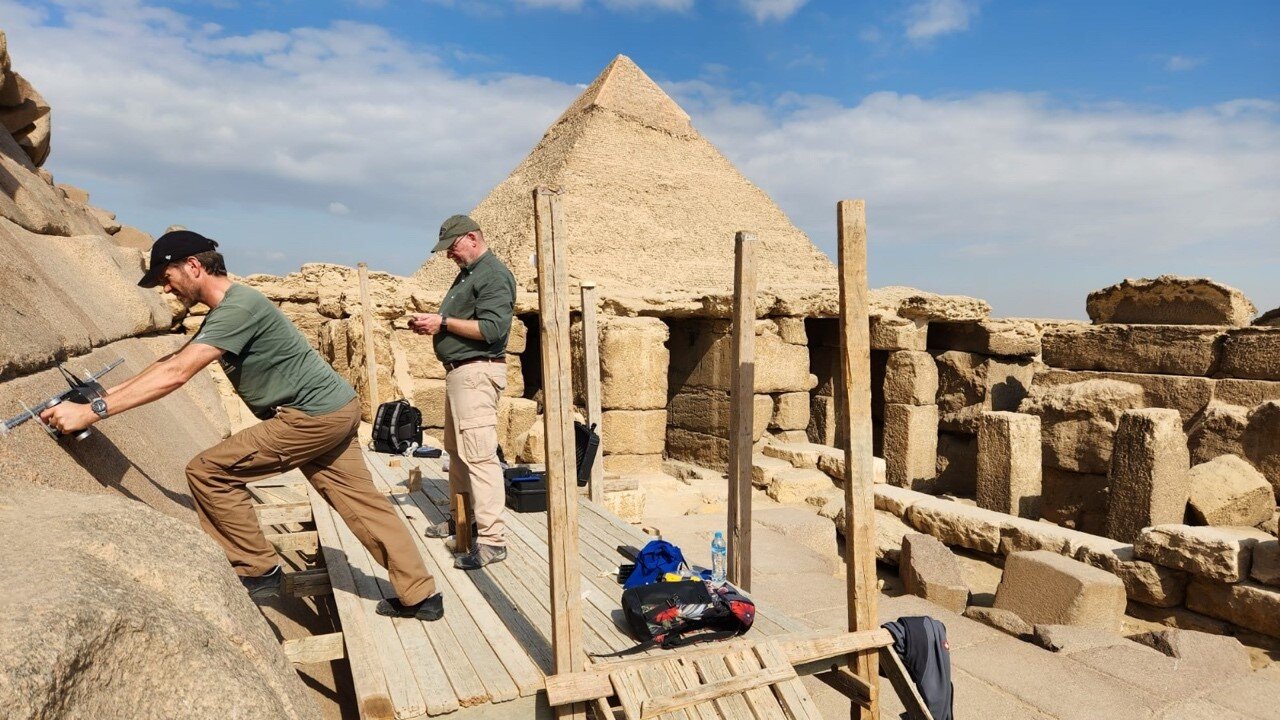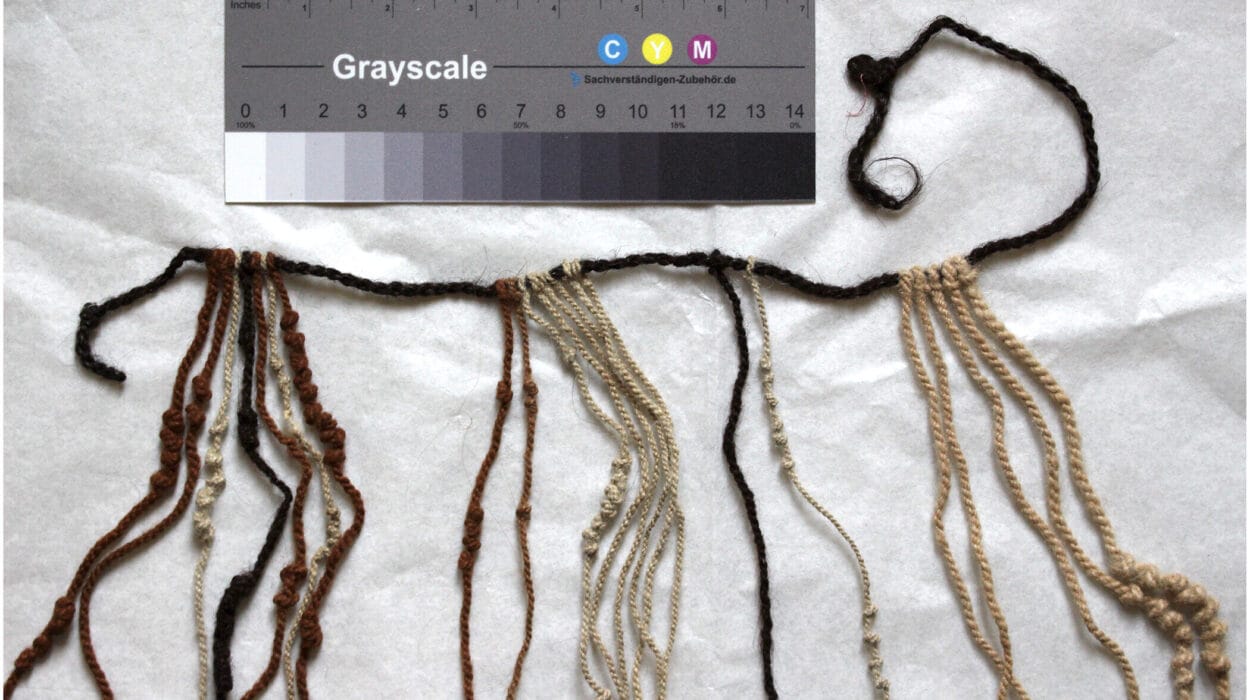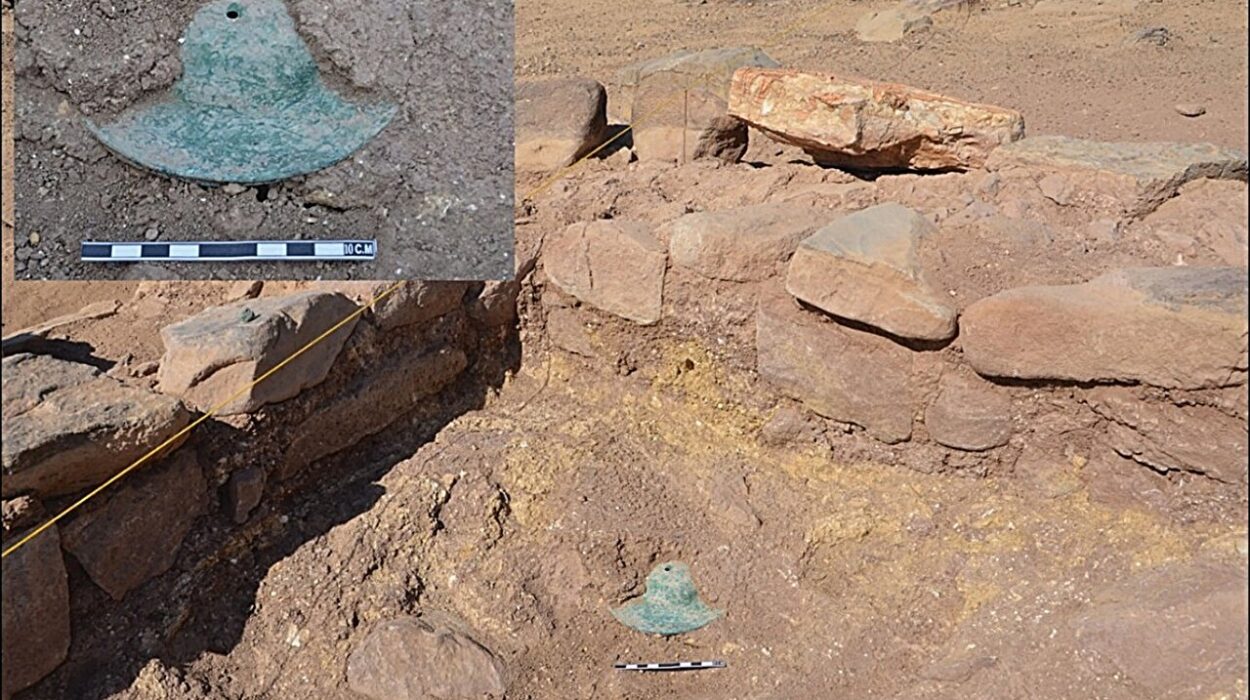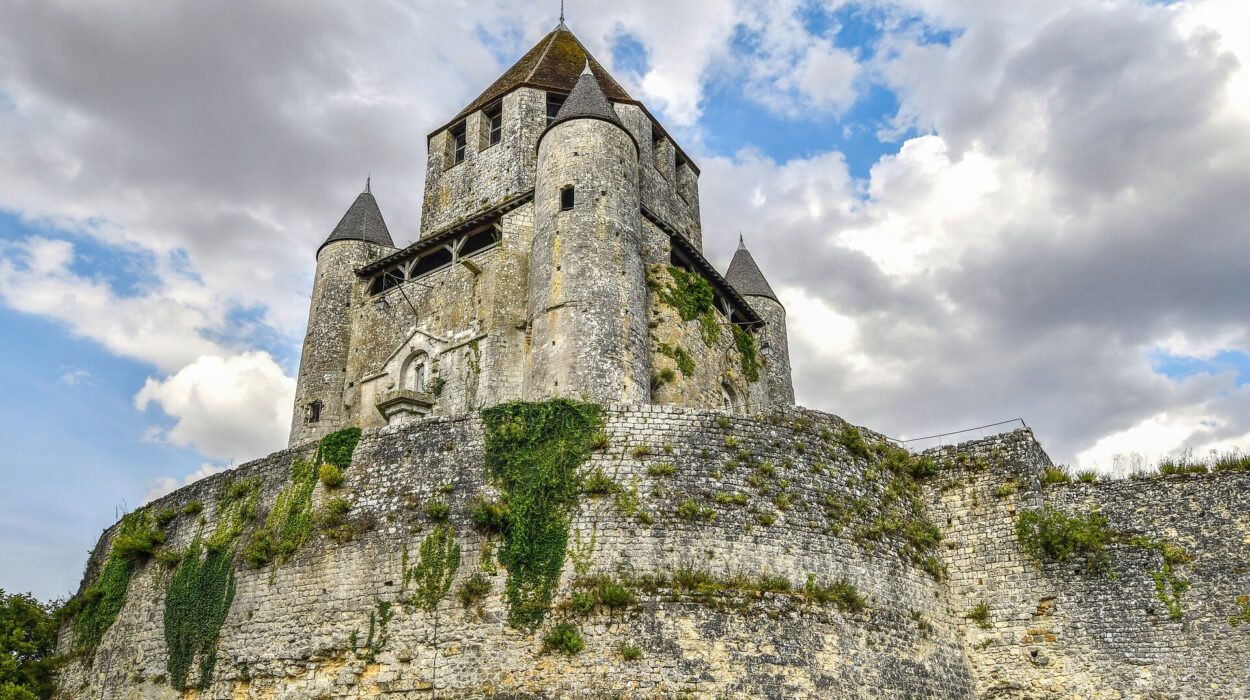For more than four thousand years, the Pyramids of Giza have stood as eternal guardians of ancient Egypt’s genius, whispering secrets across the sands of time. Yet even after centuries of study, these monuments continue to surprise the modern world. Now, new research has unveiled a remarkable discovery inside the Menkaure Pyramid—the smallest of Giza’s three great pyramids but no less enigmatic.
In a breakthrough combining advanced imaging technology and ancient curiosity, a joint team from Cairo University and the Technical University of Munich (TUM) has identified two hidden, air-filled chambers deep within the pyramid’s eastern face. The discovery could point to the long-suspected existence of a second, undiscovered entrance—an architectural secret buried for millennia.
Their findings, published in NDT & E International, mark another triumph for the ScanPyramids project, an international scientific mission dedicated to exploring Egypt’s ancient monuments using non-invasive techniques.
The Pyramid That Keeps Its Secrets
The Menkaure Pyramid, rising more than 60 meters above the Giza Plateau, is often overshadowed by its colossal neighbors—the Pyramids of Khufu (Cheops) and Khafre. Yet, in its own right, it remains a masterpiece of precision and mystery. Built for Pharaoh Menkaure, who ruled around 2500 BCE, it was constructed from massive limestone and granite blocks, with an elegance that defies comprehension even today.
For years, Egyptologists and engineers have been intrigued by an unusually smooth section of granite on the pyramid’s eastern side. This area, approximately four meters high and six meters wide, stood out from the surrounding rougher stonework. Such polished blocks were found only at the pyramid’s known northern entrance, suggesting that this second smoothed area might conceal something similar—a hidden doorway or passage.
In 2019, researcher Stijn van den Hoven proposed that this façade could mark the site of another entrance, possibly leading to undiscovered internal chambers. At the time, this idea remained speculative, awaiting the evidence that technology has now begun to provide.
Seeing the Invisible: How Modern Science Probed Ancient Stone
To test the hypothesis, the ScanPyramids team turned to a powerful suite of non-destructive imaging technologies—tools that can “see” through stone without causing any harm. Using georadar, ultrasound, and electrical resistivity tomography (ERT), the researchers scanned the eastern façade of the Menkaure Pyramid with extraordinary precision.
Each of these technologies provided a different type of data. Georadar revealed density variations within the structure; ultrasound measured how sound waves traveled through the stone; and ERT mapped electrical conductivity to identify changes in the material’s composition. By combining these readings into a unified 3D model—a process called image fusion—the researchers could visualize hidden features deep within the pyramid’s wall.
What they found was stunning: two distinct air-filled voids, located just behind the smoothed granite surface. One lies about 1.4 meters beneath the exterior, measuring roughly one meter in height and 1.5 meters in width. The other, slightly closer to the surface at 1.13 meters deep, measures about 0.9 by 0.7 meters.
For the first time, science has confirmed that these polished stones conceal hollow spaces—potential clues to a new, unknown passage.
A Plausible New Entrance Emerges
Professor Christian Grosse of TUM, one of the study’s authors, expressed excitement over the discovery. “Following the significant validation of a hidden corridor in the Pyramid of Cheops in 2023, ScanPyramids has once again succeeded in making an important finding in Giza,” he said. “The hypothesis of another entrance is very plausible, and our results take us a big step closer to confirming it.”
The idea of multiple entrances is not unprecedented. Ancient Egyptians often built complex internal passageways in their pyramids, designed both for religious symbolism and to protect the pharaoh’s burial chamber from tomb robbers. In the case of Menkaure, however, the pyramid’s interior remains less well understood than its larger counterparts.
If an eastern entrance does exist, it could lead to hidden chambers or even unexplored sections of the burial complex. For archaeologists, that would mean a once-in-a-generation opportunity to uncover new details about pyramid construction and ancient Egyptian funerary practices.
The Technology That Redefines Archaeology
The ScanPyramids project has revolutionized how scientists explore ancient monuments. Rather than drilling or excavating, which can damage fragile structures, researchers now rely on non-invasive imaging—an approach that combines physics, engineering, and computer science to uncover secrets invisible to the naked eye.
Image fusion, the key technique in this study, integrates multiple datasets to produce a detailed and reliable picture of what lies beneath the surface. This method was essential in confirming the existence of the Menkaure voids. By cross-verifying radar, ultrasound, and electrical readings, scientists could rule out false positives and ensure that the anomalies were genuine, air-filled spaces—not mere density fluctuations or cracks.
The same approach led to the groundbreaking 2023 discovery of a hidden corridor inside the Great Pyramid of Khufu. Now, its success at Menkaure signals that a new era of pyramid exploration has begun—one guided not by excavation tools, but by data and light.
A New Vision of Ancient Engineering
The discovery raises tantalizing questions about the pyramid’s construction. Why would builders create air-filled chambers behind the eastern wall? Were these structural voids designed to relieve pressure, or were they symbolic—perhaps part of a hidden architectural ritual?
Egyptian pyramids were far more than tombs; they were bridges between worlds, designed to ensure the pharaoh’s rebirth in the afterlife. Every passageway, chamber, and block of stone carried meaning. The possibility that Menkaure’s builders intentionally concealed a second entrance aligns with this tradition of sacred secrecy.
It’s possible that this hidden structure served a ceremonial purpose, connecting to a network of rituals performed during the king’s burial. Alternatively, it may represent a practical adaptation—a safeguard, or even a decoy, against looters who sought the treasures within.
Guardians of Stone and Time
Each discovery beneath Giza’s sands is a reminder that Egypt’s pyramids are living monuments—repositories of history that still pulse with mystery. The Menkaure Pyramid, though smaller than its towering neighbors, now commands global attention as the site of one of the most intriguing archaeological finds of the decade.
For researchers, the next step will be to gather even more data, perhaps using muon tomography—particle detectors that can reveal the pyramid’s internal structure in three dimensions. Future studies could confirm whether the newly discovered voids connect to deeper passages or chambers.
Whatever the outcome, the discovery has already reshaped how scientists view this 4,500-year-old structure. It proves that even in monuments studied for centuries, the unknown still waits, hidden in silence and stone.
The Timeless Allure of the Pyramids
There is something deeply human about the search for secrets buried in ancient monuments. We are drawn to them not only for what they reveal about history, but for what they awaken within us—a sense of wonder, humility, and kinship with the people who built them.
The Menkaure discovery is not merely about stones and chambers; it’s about connection. It reminds us that even across four millennia, the ambitions, fears, and hopes of an ancient civilization still echo through the structures they left behind.
As the sun sets over Giza, casting long shadows across the desert, the Menkaure Pyramid stands as it always has—majestic, silent, and enduring. But now, beneath its polished stones, a new story has begun to whisper—one that promises to reshape our understanding of Egypt’s greatest age.
More information: Khalid Helal et al, Detection of two anomalies behind the Eastern face of the Menkaure Pyramid using a combination of non-destructive testing techniques, NDT & E International (2025). DOI: 10.1016/j.ndteint.2025.103331






